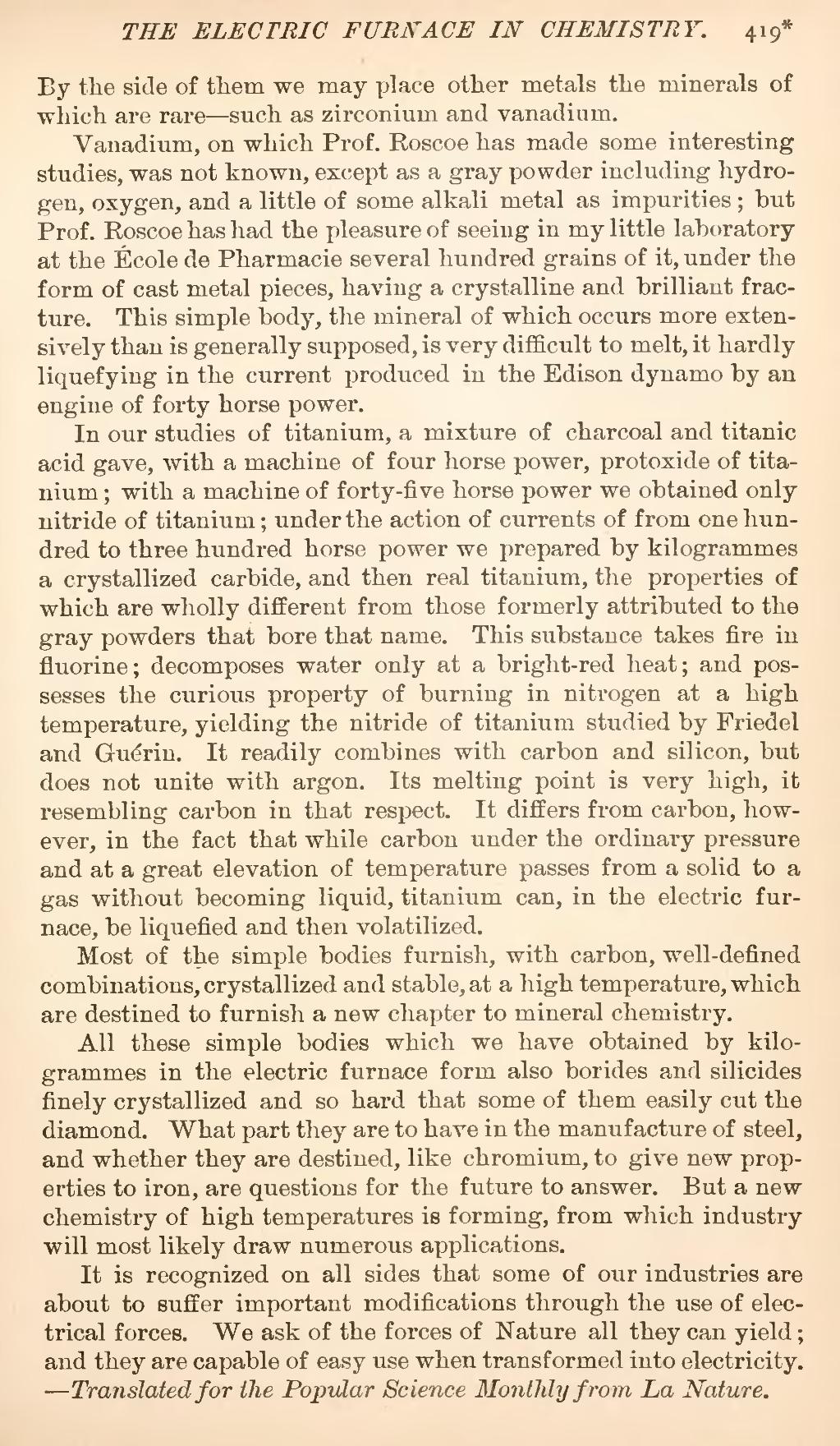By the side of them we may place other metals the minerals of which are rare—such as zirconium and vanadium.
Vanadium, on which Prof. Roscoe has made some interesting studies, was not known, except as a gray powder including hydrogen, oxygen, and a little of some alkali metal as impurities; but Prof. Roscoe has had the pleasure of seeing in my little laboratory at the École de Pharmacie several hundred grains of it, under the form of cast metal pieces, having a crystalline and brilliant fracture. This simple body, the mineral of which occurs more extensively than is generally supposed, is very difficult to melt, it hardly liquefying in the current produced in the Edison dynamo by an engine of forty horse power.
In our studies of titanium, a mixture of charcoal and titanic acid gave, with a machine of four horse power, protoxide of titanium; with a machine of forty-five horse power we obtained only nitride of titanium; under the action of currents of from one hundred to three hundred horse power we prepared by kilogrammes a crystallized carbide, and then real titanium, the properties of which are wholly different from those formerly attributed to the gray powders that bore that name. This substance takes fire in fluorine; decomposes water only at a bright-red heat; and possesses the curious property of burning in nitrogen at a high temperature, yielding the nitride of titanium studied by Friedel and Guérin. It readily combines with carbon and silicon, but does not unite with argon. Its melting point is very high, it resembling carbon in that respect. It differs from carbon, however, in the fact that while carbon under the ordinary pressure and at a great elevation of temperature passes from a solid to a gas without becoming liquid, titanium can, in the electric furnace, be liquefied and then volatilized.
Most of the simple bodies furnish, with carbon, well-defined combinations, crystallized and stable, at a high temperature, which are destined to furnish a new chapter to mineral chemistry.
All these simple bodies which we have obtained by kilogrammes in the electric furnace form also borides and silicides finely crystallized and so hard that some of them easily cut the diamond. What part they are to have in the manufacture of steel, and whether they are destined, like chromium, to give new properties to iron, are questions for the future to answer. But a new chemistry of high temperatures is forming, from which industry will most likely draw numerous applications.
It is recognized on all sides that some of our industries are about to suffer important modifications through the use of electrical forces. We ask of the forces of Nature all they can yield; and they are capable of easy use when transformed into electricity.—Translated for the Popular Science Monthly from La Nature.
